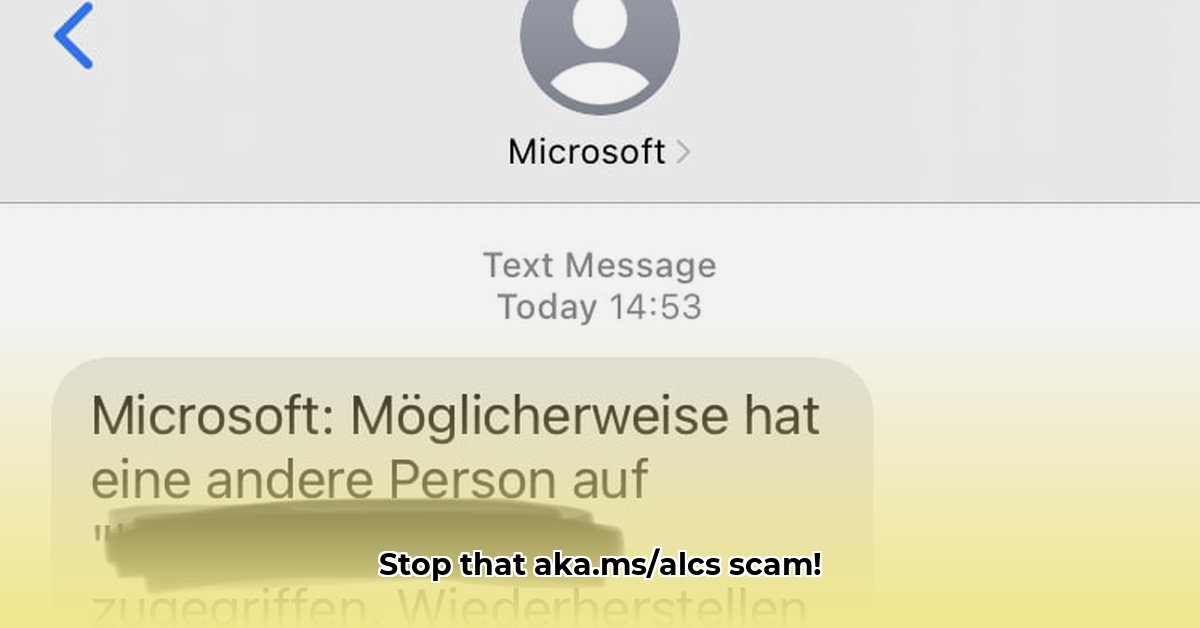
These days, sneaky text messages with shortened links like aka.ms/alcs are a common way scammers try to steal your personal information. This guide will show you, using real-world examples, how to identify and avoid these phishing attempts and protect your accounts.
Decoding the Danger: Understanding SMS Phishing Attempts
Imagine receiving a text that appears to be from a legitimate company like Microsoft, warning of a problem with your account and urging you to click a shortened link, such as aka.ms/alcs. This is a common tactic used in SMS phishing (smishing) attacks. These messages are carefully crafted to look authentic, making them difficult to spot.
Case Studies: Real-World Examples
Case Study 1: A user received a text: "Urgent! Your Microsoft account is compromised. Verify now: [shortened URL]." This message uses urgency and fear to pressure the recipient into clicking a malicious link.
Case Study 2: Another user received: "Microsoft Security Alert: Suspicious login attempt. Please confirm: [obfuscated URL]." This message plays on the user's concern about account security. The formal tone mimics legitimate security alerts, increasing its believability.
Common Tricks Used in Phishing Texts
Smishing attacks employ several deceptive techniques:
- Shortened URLs: Links like aka.ms/alcs conceal the actual destination, making it difficult to determine if the link is safe.
- Spoofing: Scammers imitate legitimate companies to build trust. They might use a name that closely resembles a real company, or even mimic the official branding.
- Social Engineering: This involves manipulating psychology to trick you into acting against your better judgment. Urgency and fear are commonly used tactics.
How to Protect Yourself from Phishing Texts
Don't become a victim! Here's how to protect yourself:
Spotting a Phish: Be cautious of unsolicited messages, especially those that demand immediate action. Look for suspicious links, typos, and grammatical errors. Legitimate companies rarely use informal language or create a sense of panic. A surprising number of scams use poor grammar and spelling as a clue to their authenticity.
Verifying Legitimacy: Before clicking any link, hover your mouse over it to view the full URL. If it's a shortened link, use a free online URL expander to reveal the true destination. Always verify the message directly through the company's official website or contact information, never relying on the information provided in the suspicious text.
Reporting Suspicious Texts: Report suspicious messages to your mobile carrier and the Federal Trade Commission (FTC). This information helps authorities track and combat these scams.
Strengthening Online Defenses:
- Multi-Factor Authentication (MFA): Enable MFA on all your important accounts. Even if someone gets your password, they'll still need a second factor (like a code sent to your phone) to access your account. This adds a critical layer of security.
- Browser Extensions: Use browser extensions designed to detect and block phishing websites. These can provide an additional layer of protection.
Advanced Techniques (Optional):
- URL Analysis: Learn to analyze URLs to identify potential threats.
- Security Software: Keep your antivirus and anti-malware software updated.
A Proactive Approach to Cyber Safety
Your best defense is awareness. Stay informed about the latest scams, be skeptical of unsolicited messages, and protect your accounts with strong passwords and MFA. By following these simple steps, you significantly reduce your risk of falling victim to smishing attacks.
Key Takeaways:
- Smishing attacks often create a sense of urgency and exploit fear to manipulate victims.
- Shortened URLs and vague wording are major red flags.
- Always verify information directly through official channels.
- Implementing MFA is crucial for enhanced account security.
- Report suspicious messages to the appropriate authorities.